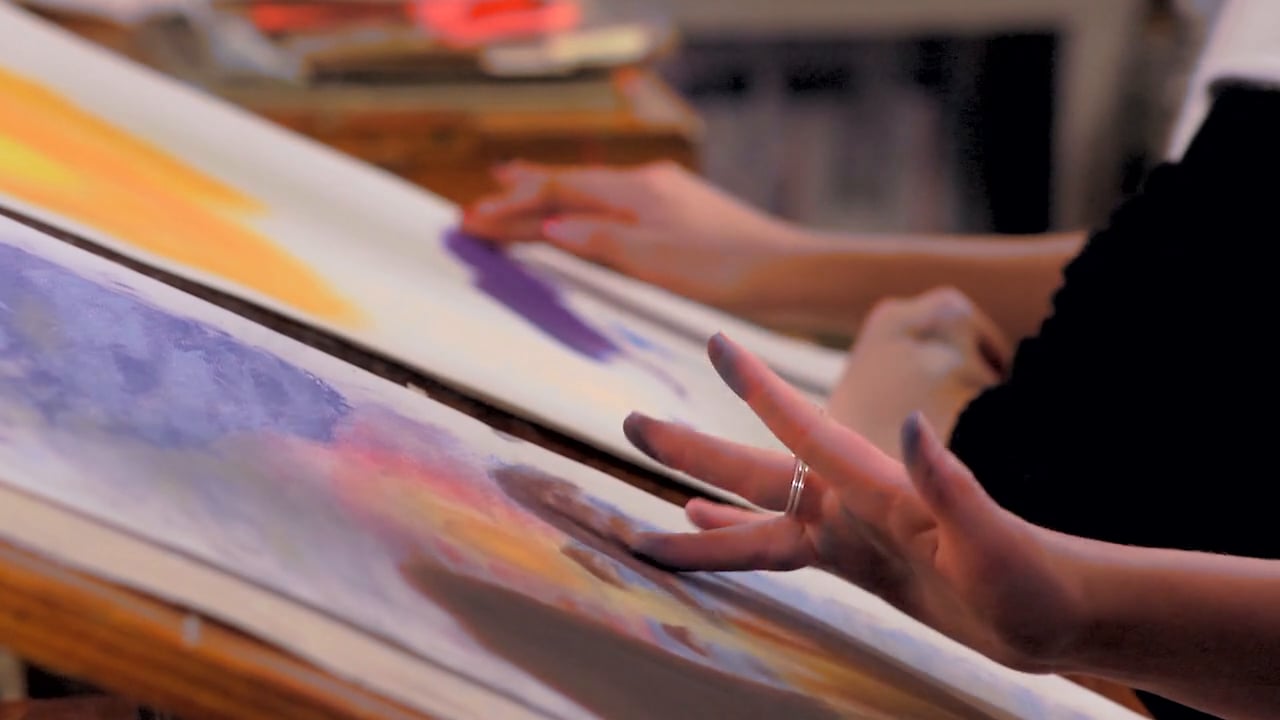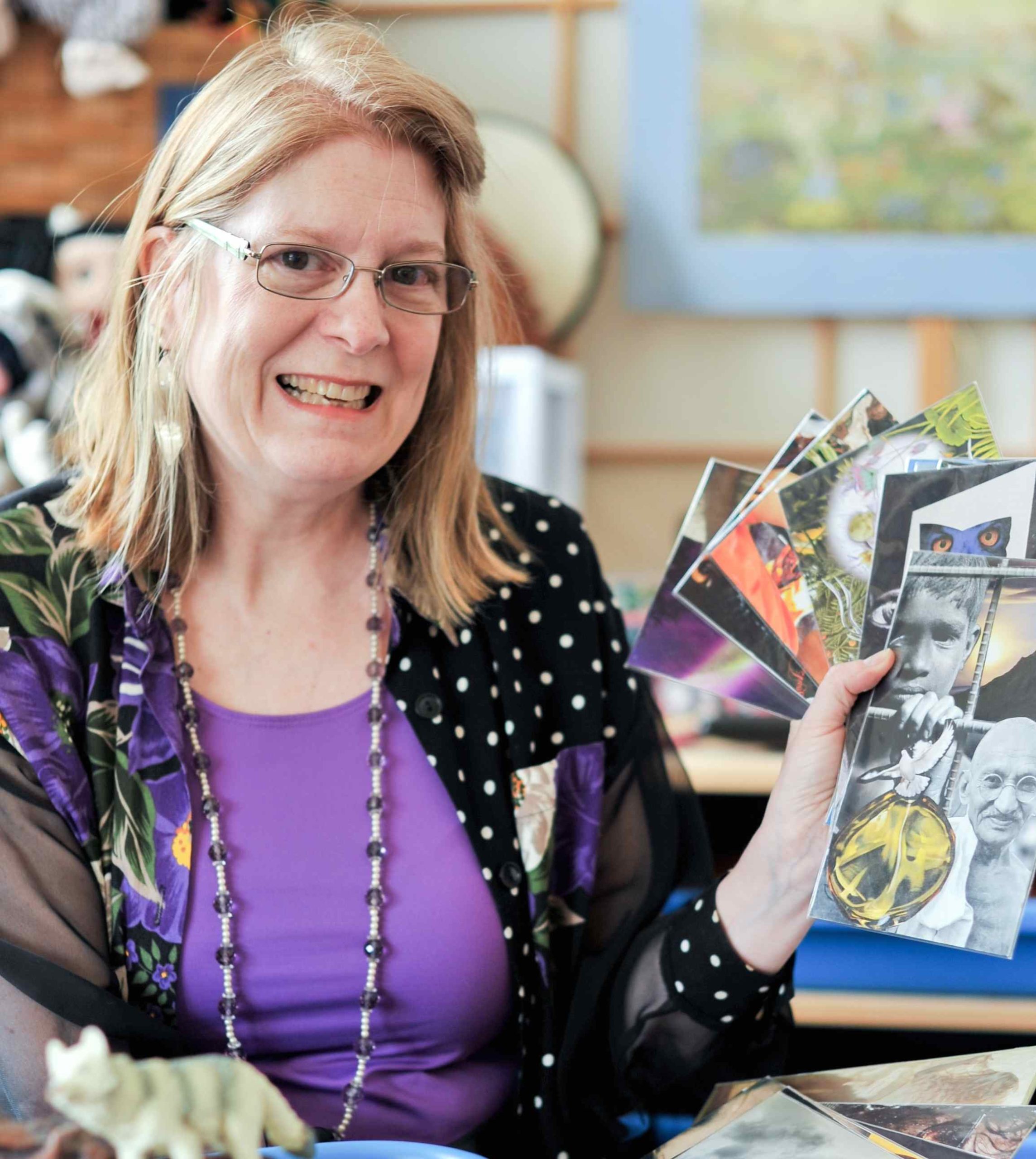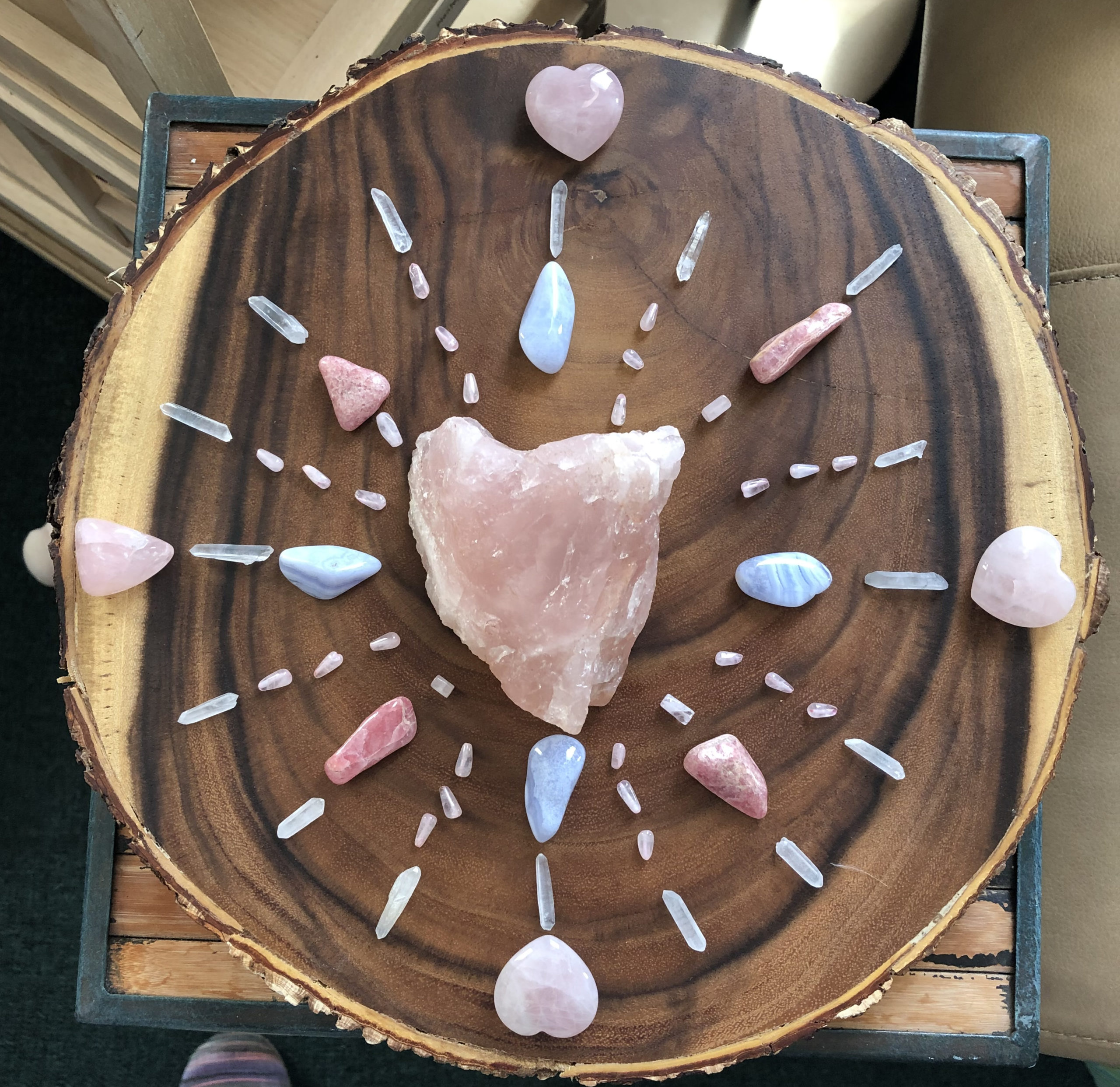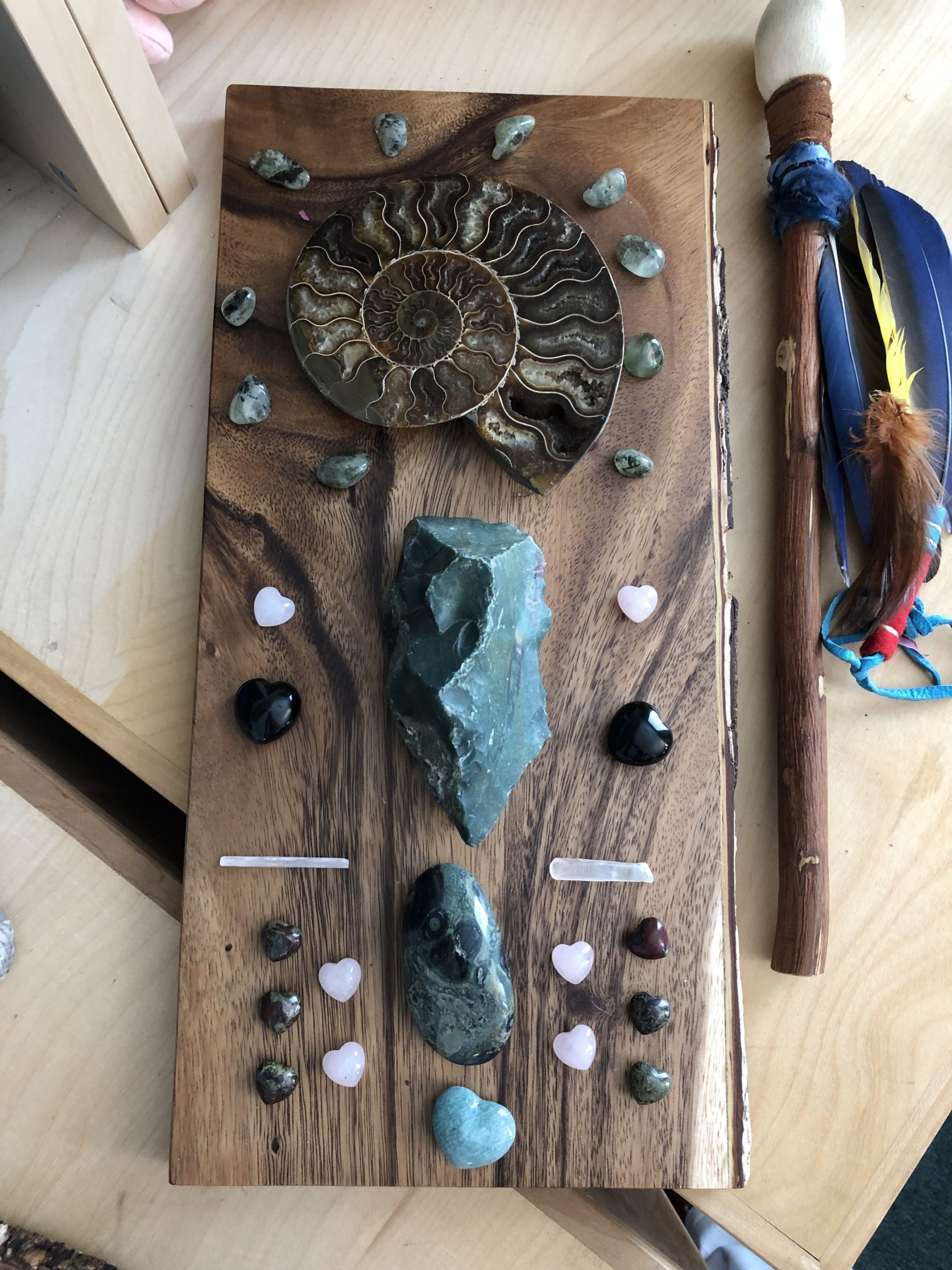Expressive Arts Therapies
The Creative interventions of Art therapy, Guided Imagery Through Music, Psychodrama, Creative Writing, Play Therapy, and Sandtray Therapy have been utilized for more than 70 years. These are referred to as “creative arts therapies” because of their roots in the arts and theories of creativity. Expressive arts therapies are defined as the use of art, music, drama, dance/movement, poetry/creative writing, bibliotherapy, play, and sandplay within the context of psychotherapy, counseling, rehabilitation, or medicine. Additionally, expressive therapies are sometimes referred to as “integrative” when various arts are purposively used in combination in treatment.
Sand Tray Worlds
 Sandplay Therapy is a creative form of psychotherapy that uses a sandbox and a large collection of miniatures to enable a client to explore the deeper layers of his or her psyche in a totally new format; by constructing a series of “sand pictures,” a client is helped to illustrate and integrate his or her psychological state.
Sandplay Therapy is a creative form of psychotherapy that uses a sandbox and a large collection of miniatures to enable a client to explore the deeper layers of his or her psyche in a totally new format; by constructing a series of “sand pictures,” a client is helped to illustrate and integrate his or her psychological state.
The use of sand either black volcanic, orange Sedona, purple garnet or white crystal, creates a ground for the waiting story to inhabit. Into this world we project our own story. This experience allows each creator to play out fantasies and to externalize the workings of the psyche, making concrete in three dimensions the inner world, free from the interpretations of others. The “Soul” knows its own story and reveals its meaning to the creator of each unique world. This then is the land of the psyche.
I studied with Dr. Gisela Schubach De Domenico, the originator of the Sandtray Worldplay method. It grew out of the Jungian movement in the 1920’s when Margaret Lowenfeld MD used play with miniature figures, sand, and water in a blue bottomed, aluminum metal tray container in her 1920’s London Play Therapy Clinic. She had been inspired by a childhood reading of H. G. Well’s Floorgames (1906). According to Gisela, “Some of my own clients and students have called it a shamanic journey, a looking into the Mirror, a place to find self, a meditation, trance work, a spiritual quest, a journey to the ancestors, a private drama, inventing my life, genesis play, a place to talk to Mom, God’s time, and playground earth. (taken from one of Gisela’s articles)
Art Therapy
 Many years as an Art Teacher and a Waldorf Teacher, has provided me experience with various materials when utilizing Art Therapy. Mask making, mandala, drawing, painting, collage, light-table black/white silhouette drawing, dream-jars, and visual journals, altered books, clay or bead art are just a few ways art therapy can apply art activities within a therapeutic setting.
Many years as an Art Teacher and a Waldorf Teacher, has provided me experience with various materials when utilizing Art Therapy. Mask making, mandala, drawing, painting, collage, light-table black/white silhouette drawing, dream-jars, and visual journals, altered books, clay or bead art are just a few ways art therapy can apply art activities within a therapeutic setting.
Art therapists use Carl Jung’s practice of active imagination as a way of accessing and consulting with one’s inner wisdom. Essentially, this is a process of consciously dialoguing with your unconscious. Art as the narrative, allows us to translate experiences into a concrete form.
Creating an externalized object, provides a way of detaching from intrusive thoughts, feelings, and memories in order to transform them. “Rather than remaining a disturbing mixture of free-floating emotions, experiences are placed in an objective, historical context.” (Cathy Malchiodi, PhD, LPCC, LPAT, ATR-BC) This can take the format of a “dialogue with the image,” free association with the artwork’s contents, spontaneous journaling about an artwork or dream, witnessing one’s drawing or painting, or even an invitation to write a “rant” in the tradition of free-form poetry or prose about an image or series of images.
It is not surprising that as I create or support the process of my client, we experience a connection and in that relationship, a dance of insight awakens the journey. This is similar to neuroscience physician, Dan Siegel’s concept of “mindsight” or the capacity for insight and empathy. Trauma expert Bruce Perry uses the terms “attunement” as a way to read the nonverbal communication of others.
Gesture in Colors: This is the use of listening to music while standing and painting or the use of pastels to give expression to Gesture and Movement. This provides an expression of Emotions and Sensations, bringing new form to our Narratives.
SoulCollage®
 SoulCollage® is a therapeutic method that Seena B. Frost, LMFT, M.Div. began formulating in 1989. Frost drew elements from the concepts, methods, and therapy systems of traditional sources, such as Jungian analytical psychology and Jung’s concept of “Active Imagination,” Virginia Satir’s “parts therapy,” Fritz Perls’ Gestalt Therapy, Humanistic Psychology, Transpersonal Psychology, Narrative Therapy, and Psychosynthesis. Frost fashioned a simple, effective, new method, the SoulCollage® method, from these elements. When therapists use the SoulCollage® method, their clients make collaged cards, arranging self-selected images to represent aspects of themselves and their lives. The clients then use the cards to access their intuition and imagination by entering into a gestalt process, dialoguing with a card, using their own voice and the voice in the image on a card, to discover the card’s narrative and its meaning for them in their lives. © 2017 Mariabruna Sirabella and Kylea Tayl
SoulCollage® is a therapeutic method that Seena B. Frost, LMFT, M.Div. began formulating in 1989. Frost drew elements from the concepts, methods, and therapy systems of traditional sources, such as Jungian analytical psychology and Jung’s concept of “Active Imagination,” Virginia Satir’s “parts therapy,” Fritz Perls’ Gestalt Therapy, Humanistic Psychology, Transpersonal Psychology, Narrative Therapy, and Psychosynthesis. Frost fashioned a simple, effective, new method, the SoulCollage® method, from these elements. When therapists use the SoulCollage® method, their clients make collaged cards, arranging self-selected images to represent aspects of themselves and their lives. The clients then use the cards to access their intuition and imagination by entering into a gestalt process, dialoguing with a card, using their own voice and the voice in the image on a card, to discover the card’s narrative and its meaning for them in their lives. © 2017 Mariabruna Sirabella and Kylea Tayl
“When you hold them [the cards] all together in your hands, you will be holding a symbolic reflection of your one, many faceted, evolving Soul. The longer you work with the images, the more power they have to reveal and change patterns in your life.” (FROST, Seena B., 2010, pg. 2).
Mandala & Mosaic’s
Mandalas
The use of creative expression within the container of a circle, is an ancient art form. The word “mandala” comes from the ancient Sanskrit word signifying “circle.” The meaning of mandalas, however, extends far beyond their simple shape. Mandalas represent the wholeness of life, and the unity that exists among living beings and the world in which we all exist. They play a role within many spiritual traditions and can be found within a variety of cultures.
Carl Jung is credited with bringing the mandala into Western culture and pioneering the use of the term as a name for symbolic circular drawings. Jung believed that during intense periods of self-growth, people have a natural urge to create circular mandalas and that the resulting artwork is symbolic of the re-balancing and transformative process that is underway in the psyche of the individual.
Mosaic Art
Mosaic Art has a place in the therapeutic world as a way to move through disintegration to a place of transformation. A mosaic is, simply, an image made of many pieces of something such as tiles, glass, mirror, or stones. The breaking phase is satisfying in its cathartic nature, allowing the artist to acknowledge and release anger and pain. Arranging is where we “put the pieces together”. It is somewhat like a puzzle, but one where we ourselves determine the outcome, re-experiencing the variety and sharpness of each shard as we reassemble them into a new image.
In mosaics, we undergo a metamorphosis, a profound transformation. Our new image which emerges has a renewed sense of wholeness, integrity, and permanence. The brokenness is preserved, as a necessary element in creating the beauty and strength of the finished product.
Is it possible that we humans are like mosaics? That not despite of, but because of our wounds, fractures and imperfections, we are paradoxically stronger, more complex, more cohesive and more beautiful?


“Images, symbols and metaphors are key to our unconscious lives, our dreams, and our stories. They are a primary way we make sense and meaning of the world.”

